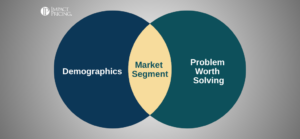A friend sent me this story:
An old man is running a fruit stand and displays a sign that reads 1 melon for $3, 3 melons for $10.
A young man approaches and asks for one melon, for which he pays $3.
He proceeds to purchase a second, and then a third, each for $3.
As the young man walks away he calls out, “Hey old man, I just bought 3 melons for $9. Maybe you’re not so good at this business thing.”
The old man mutters to himself, “Almost everyone who comes to my stand buys 3 melons instead of 1, but they all want to teach me how to do business”.
I’ve seen this before, but when I read it this time, I stopped to think more deeply about it. It’s certainly funny, counter-intuitive, and yet it seems like it could work – what’s really going on?
I’d love to hear your explanation. Here’s mine.
There seem to be 3 things happening.
Generating Attention, Behavior Economics, and Ego in Setting Price
1. Price is Used to Generate Attention
In some situations, the price of something can be part of what grabs someone’s attention. Do you remember $5 footlongs from Subway? They emphasized price to grab attention. In this case, when someone does the quick math and realizes the “mistake”, it grabs their attention.
2. Behavioral Economics (Transaction Utility in particular)
People want to feel like they “got a good deal” or they “won” in the game of buying. By buying 3 melons for $9, they clearly ‘won’ $1, simply because the ‘3 melons for $10’ deal existed. This makes them feel good.
3. Ego
The only reason to say, “Hey old man, I just bought 3 melons for $9. Maybe you’re not so good at this business thing” is to boost their own ego. Buying 3 melons for $9 lets the buyer prove they are smarter than the fruit stand owner. However, put yourself in the shoes of the old man. He ignores his own ego in exchange for larger sales. Hmmm.
It’s an interesting story. What’s your take on it?















